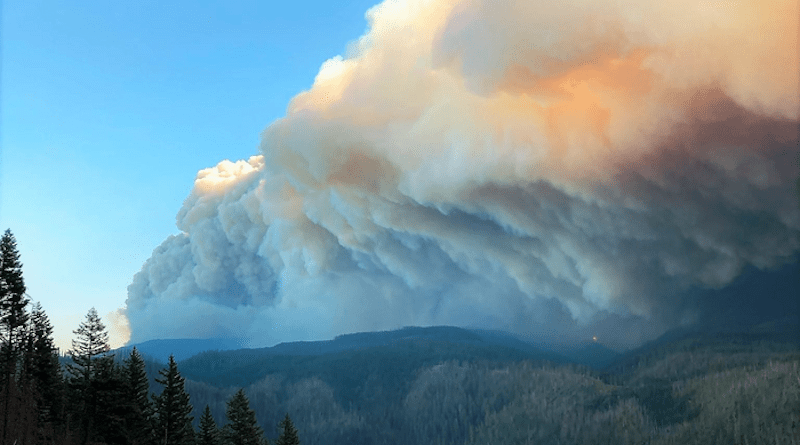New Study Offers Insight Into Past And Future Of West-Side Wildfires
When the 2020 Labor Day Fires torched more than 300,000 hectares over the span of two weeks in parts of western Oregon and Washington, they devastated communities and put the threat of west-side fires squarely into focus. A new study led by the USDA Forest Service’s Pacific Northwest Research Station examines the context surrounding the fires and offers insight into the historical role of large, high-severity fires—and the future of wildfires—west of the Cascades.
“Without a doubt, the 2020 Labor Day Fires were a significant fire event on many levels, and one that was a wake-up call for the region,” said Matthew Reilly, research forester and lead author of the study, which is published in the journal Ecosphere. “The goal of our study was to help understand how this event compared to past west-side fires so that we can help inform adaptation strategies aimed at preventing or mitigating similar events in the future.”
Drawing from a literature review, extensive historical data, and new analysis, Reilly and his co-authors explored five questions surrounding the 2020 Labor Day Fires: how the 2020 fires compared with historical fires in the region, the role of weather and climate, the effects of forest management and pre-fire forest structure on burn severity, the impacts of these fires on west-side landscapes, and what can be done to adapt to similar fires in the future. Ultimately, they found that the 2020 fires were remarkably consistent with historical fires on the west side, both in terms of their timing and size and the cause of their rapid spread—dry conditions combined with strong east winds.
“Our findings suggest that these severe fires are normal for west-side landscapes when you look at historical fire regimes at longer time scales,” Reilly said. In fact, the researchers identified similarly large historical fires in the early 20th century under similar weather conditions—some even burning right around Labor Day—in some of the same locations that burned in 2020.
Because of the abundant and productive forests characteristic of the west side and the driving role of extreme winds, conventional fire management tools used in dry forests, like prescribed burning and fuels management, will likely be less effective in west-side forests than they are on the east side. This is particularly the case, their study found, when fire weather conditions are as extreme as those witnessed during the 2020 fires.
“Our study indicates we need very different approaches and adaptation strategies in west-side forests compared to those we use in dry forests,” Reilly said.

